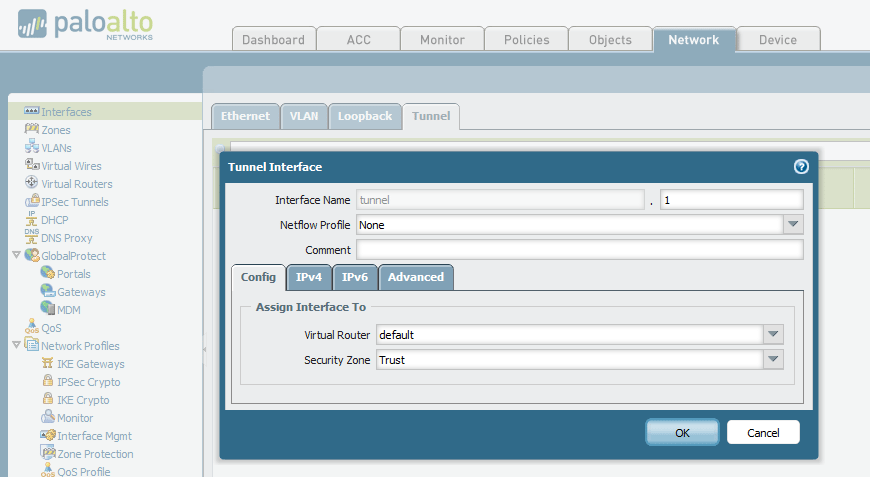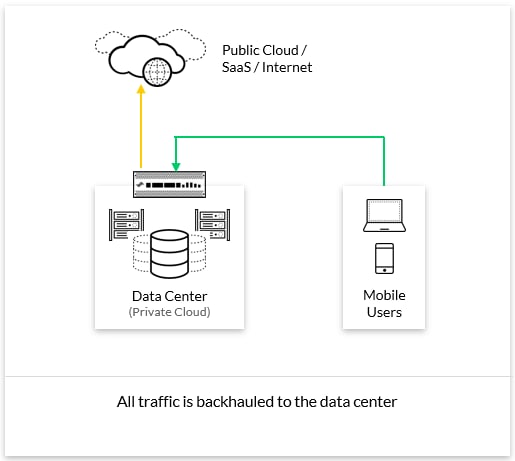

Open the Advanced tab and add users to Allow List. Creating Authentication Profile for GlobalProtect VPN.Ĭlick on Device > Authentication Profile and click on Add. Creating Local Users for GlobalProtect VPN Authentication.Ĭlick on Device > Local User Database > Users and click on Add. Creating an SSL/TLS Service Profile.Ĭlick on Device > Certificate Management > SSL/TLS Service Profile > Add. Now, just fill the Certificate filed as per the instruction appears on screen. Generating a Self-Sign Certificate for GlobalProtect.Ĭlick on Device > Certificate Management > Certificates > Device Certificates > Generate.
#Palo alto networks vpn tunnel monitor verification
Verification commands to validate IPSEC Tunnel configuration: # set network virtual-router “Virtual Router (any number)” routing-table ip static-route Route_ to_(VPN Name) destination (Subnet) # set network virtual-router “Virtual Router (any number)” routing-table ip static-route Route_to_(VPN Name) metric 10 # set network virtual-router “Virtual Router (any number)” routing-table ip static-route Route_to_(VPN Name) interface tunnel (number) # set network tunnel ipsec (VPN Name) VPN tunnel-interface tunnel (number) # set network tunnel ipsec (VPN Name) VPN copy-tos no # set network tunnel ipsec (VPN Name) VPN anti-replay yes # set network tunnel ipsec (VPN Name) VPN tunnel-monitor enable no # set network tunnel ipsec (VPN Name) VPN auto-key ipsec-crypto-profile IPsec_Profile # set network tunnel ipsec (VPN Name) VPN auto-key ike-gateway (VPN Name) VPN # set network ike gateway (VPN Name) VPN local-address interface Ethernet (number) # set network ike gateway (VPN Name) VPN peer-address ip X.X.X.X # set network ike gateway (VPN Name) VPN protocol-common passive-mode no # set network ike gateway (VPN Name) VPN protocol-common nat-traversal enable no # set network ike gateway (VPN Name) VPN authentication pre-shared-key key paloalto # set network ike gateway (VPN Name) VPN protocol ikev1 exchange-mode auto # set network ike gateway (VPN Name) VPN protocol ikev1 ike-crypto-profile IKE_Profile # set network ike gateway (VPN Name) VPN protocol ikev1 dpd retry # set network ike gateway (VPN Name) VPN protocol ikev1 dpd interval 5 # set network ike gateway (VPN Name) VPN protocol ikev1 dpd enable no # set network virtual-router (virtual router nnumber) interface (name) # set zone vpn network layer3 tunnel(number) # set network interface tunnel units tunnel (number) comment “(name) VPN” # set network interface tunnel units tunnel (number) ipv6 interface-id EUI-64 # set network interface tunnel units tunnel (number) ipv6 enabled no IPSec Tunnel creation commands should be executed in the order listed below:

Click on Policies > Security and click on Add. Configuring Security Policy for GRE Tunnel.Ĭonfigure the security policy on Palo Alto Firewall LAN TO GRE and GRE TO LAN. define the destination network for the peer end. To configure a default route, click on Network > Virtual Routers > Default > Static Route and click on Add. Creating the default route for the destination network. Configure the Local Address and Peer Address. Define a name for this GRE Tunnel, select the interface on which you have your Public IP. Click on Network > GRE Tunnel and click Add. Configure an IP address for the tunnel interface.Ĭonfigure the GRE Tunnelon Palo Alto Firewall. Click on Network > Interfaces > Tunnel and click Add. Next, Enter a name and select Type as Layer3.Ĭonfigure the Tunnel interface. Click on Network > Zones and click on Add. Creating a Zone for Tunnel Interface.ĭefine a Network Zone for GRE Tunnel.


 0 kommentar(er)
0 kommentar(er)
